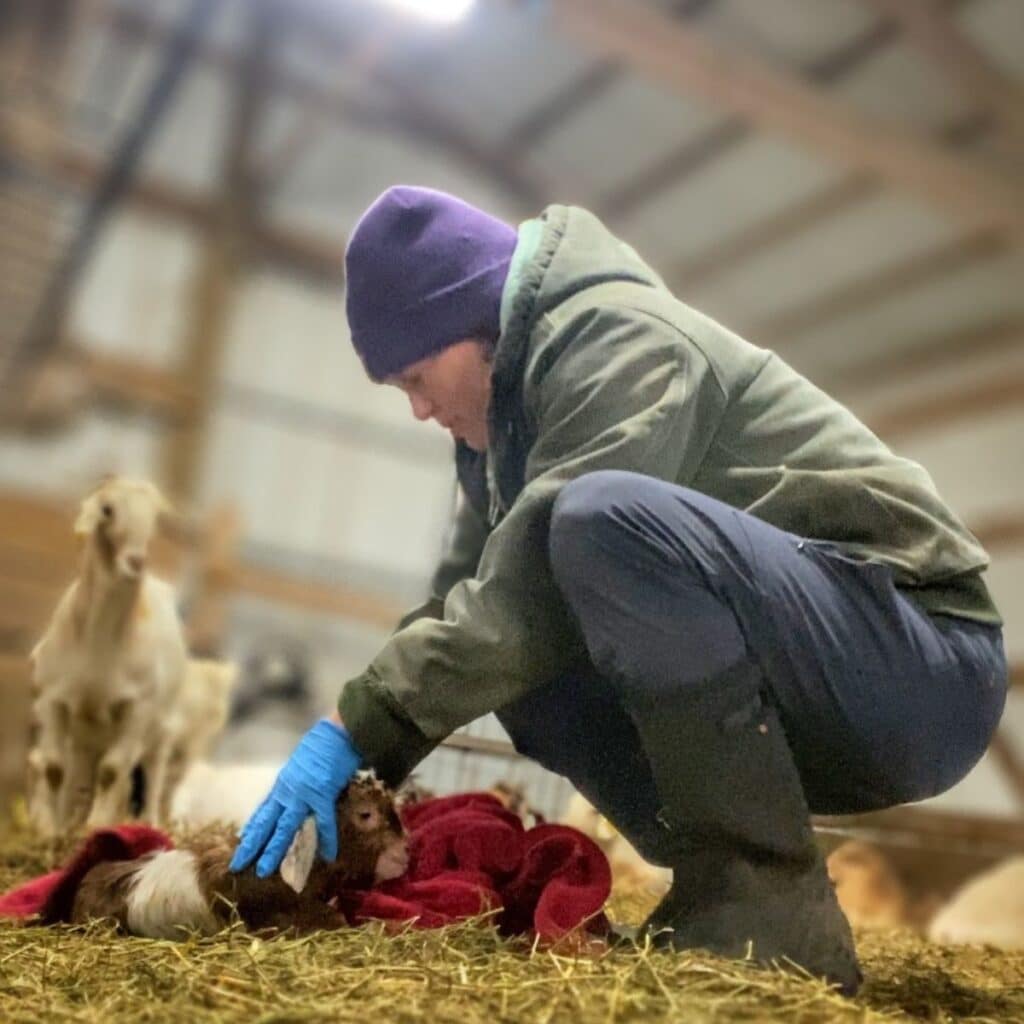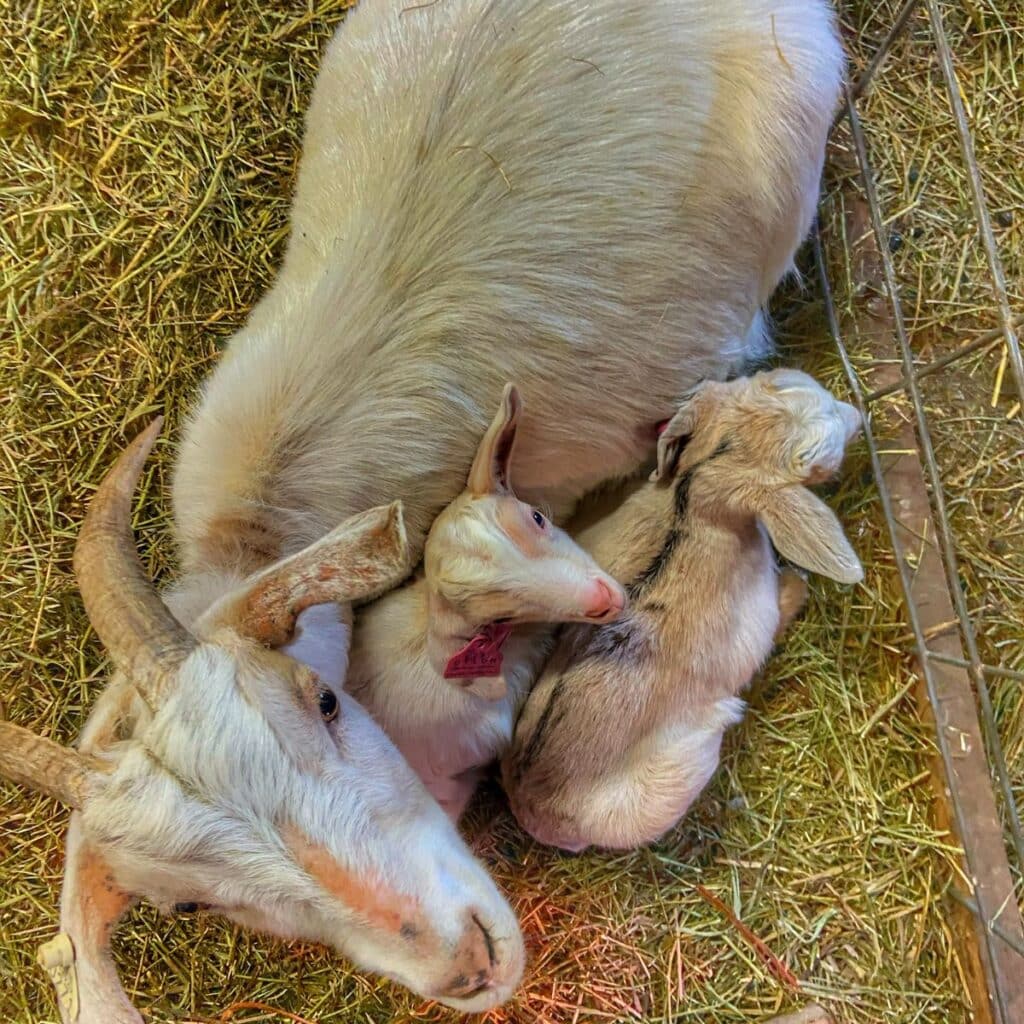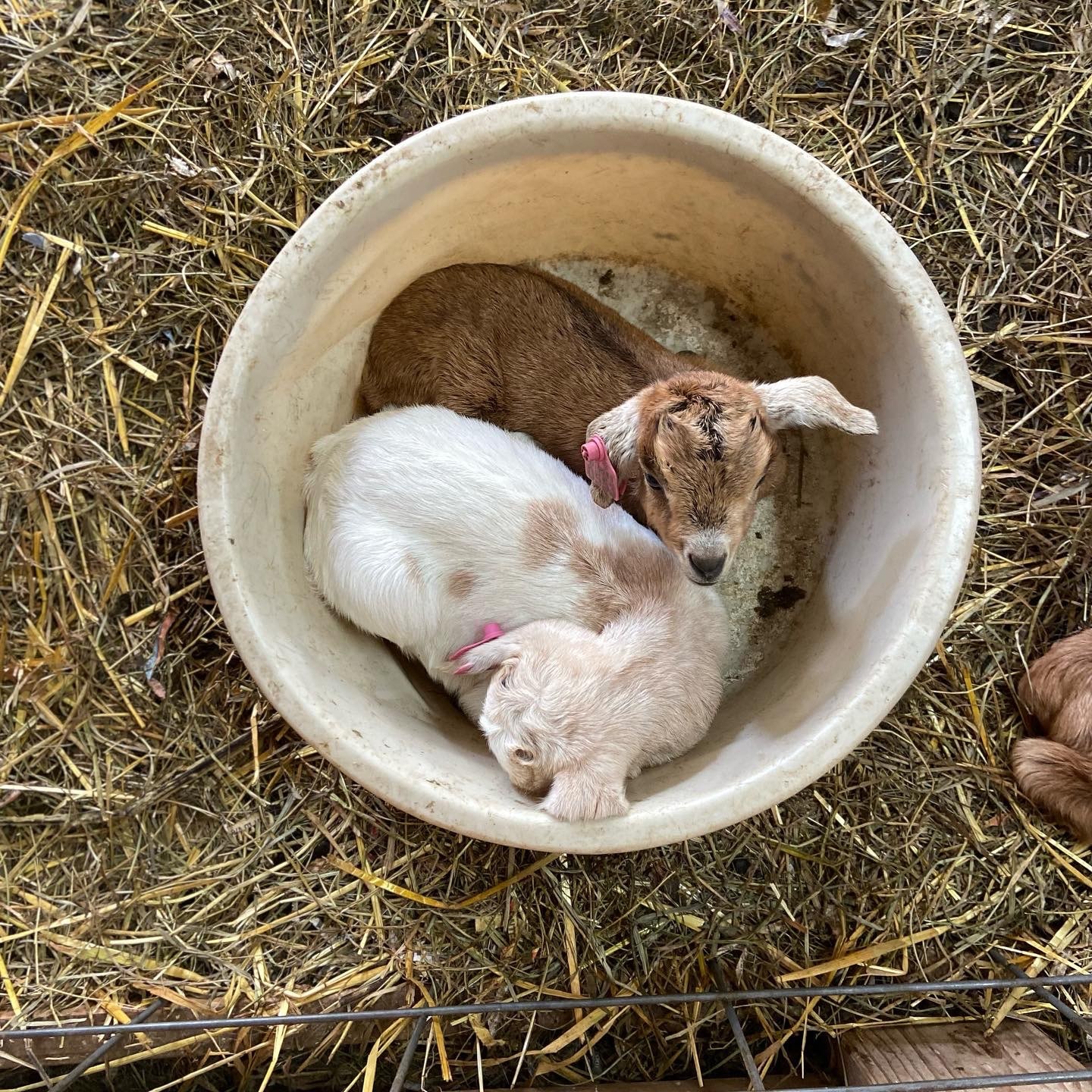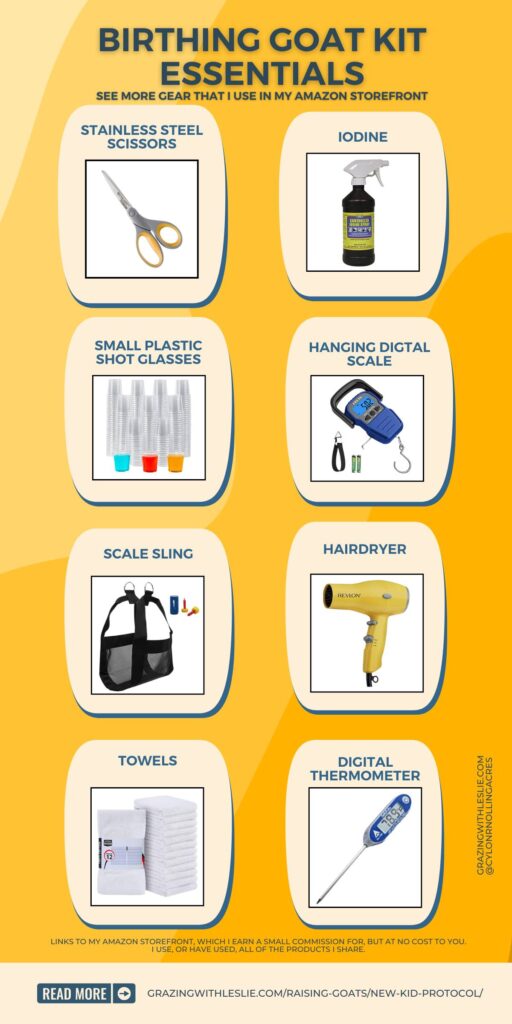Kidding season can be an exciting, yet stressful time on the farm. There’s a lot of uncertainty when newborn goats will arrive and how much you might have to assist the doe in the birthing process.
This article will cover the basics of what you need to do when your first newborn goats arrive after delivery and how to care for them.
As an Amazon Associate I earn from qualifying purchases.
Table of contents

Steps to care for new baby goats
Here’s what you need to do to care for new baby goats after kidding:
- Trim the umbilical cord
Trim the baby goat’s umbilical cord with a pair of disinfected scissors. Then dip the umbilical cord in iodine to prevent infection.
I will typically use a small plastic disposable shot glass with the iodine to dip the umbilical cord. - Make sure the newborn goat starts to nurse
Then make sure the newborn goat starts to nurse the doe. In most cases, the baby goat should start trying to stand and instinctively try to nurse.
This is important so the newborn goats get colostrum to ensure a strong and healthy start. Sometimes this means I might have to help. - Take the weight of the baby goat
Weigh the newborn goat and record it.
- Put an ID on the goat kid
Ear tag or use a temporary paper ID band on the baby goat. If using the ID band, write the dam’s number (mom), date of birth, and gender.
- Record important information
Record in a notebook or goat record-keeping app: gender, weight, ear tag, and anything notable with the birth.
Typically I’m keeping my notes on a note pad and then I’ll move it to our online record-keeping system.
I would prefer to do it all at once online, but my phone doesn’t always work well with the internet in our barn. - Move the doe and kids into a kidding pen
Next, I’ll move the doe and her newborn goats to a smaller kidding pen, often called a jug, for 24-48 hours to aid with bonding.
If there are more than two baby goats or a mom and kids seems like they might need more time in this stage they’ll stay together in this pen for another day or two.
Goat care after kidding
Once the new baby goat is dry, clean, and has eaten. I’ll make sure the doe is doing well.
Goat care after kidding for the doe includes
- Freshwater, usually with electrolytes
- Slice of high quality hay, such as alfalfa hay
- If had to assist with the birth or had to reposition any of the baby goats before the birth, I’ll give the doe antibiotics to prevent infection.

Birthing goat kit essentials
Below you’ll find a list of the essential supplies to have in your birthing goat kit to care for your new baby goats when they arrive after birthing.
You’ll likely add more to your kidding kit over time, but these are the essentials.
- Stainless steel scissors for cutting umbilical cords (dedicated for this use)
- Iodine for dipping cut umbilical cords and cleaning scissors as a disinfectant
- Small plastic shot glasses for a quick iodine dip with the umbilical cord
- Hanging digital scale to take newborn goat kid weights
- Scale sling to easily weigh the babies with the hanging scale (or use a bucket)
- Hairdryer (dedicated for kidding season) to dry off the new baby goats, especially when the weather is cold
- Towels for wiping down the new goat kids. Get a stash of old towels, or just get a big pack of bar mop towels.
- Digital thermometer for checking the baby goat’s temp if they aren’t very active or feel cold
- Paper bands (like the ones you get an events) to write new kid information: mom, weight, gender, weight, date of birth
- Bonus supplies: OB gloves for assisting with births or to check if a kid needs to be repositioned
You can find all of these supplies on my Amazon store front or in the graphic below.
Note: The link(s) above is an affiliate link.
Video: How to care for a new baby goat
Watch this short video where I walk through the steps I take to work with new baby goats.
Video: Watch a goat give birth
Watch the video below to see a goat give birth, clean her baby, the baby get up on it’s own and start to nurse. It gives you an idea of the full progression of birth and life.
Blog was original published April 11, 2023


Thank you for the detailed insights on newborn goat care! I found your tips on monitoring their health right after birth particularly helpful, especially for first-time goat owners like myself. I appreciate the emphasis on creating a safe environment for the kids. Looking forward to more posts!